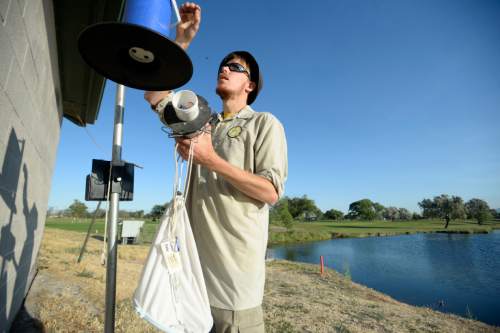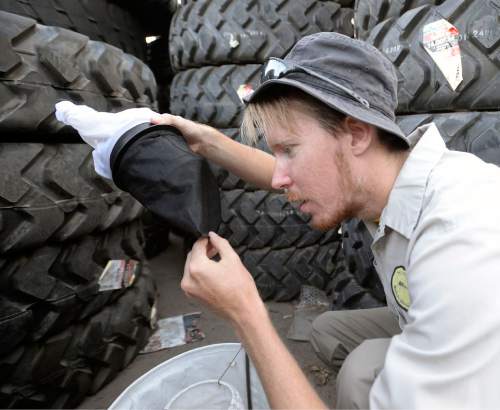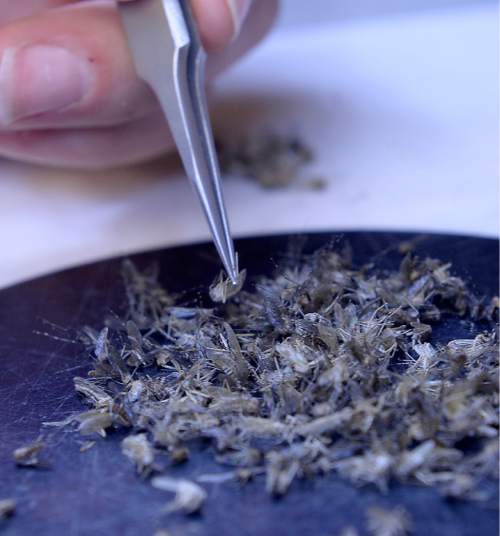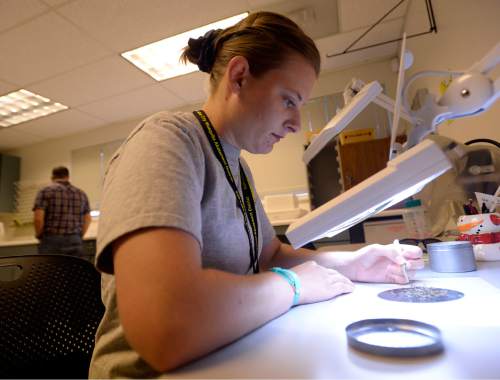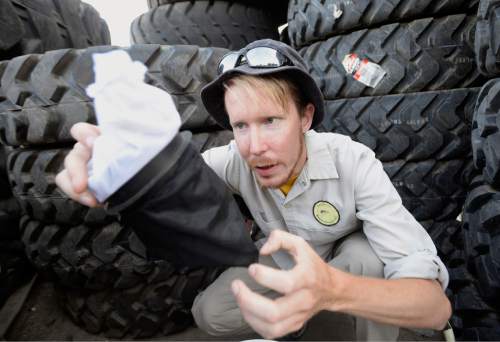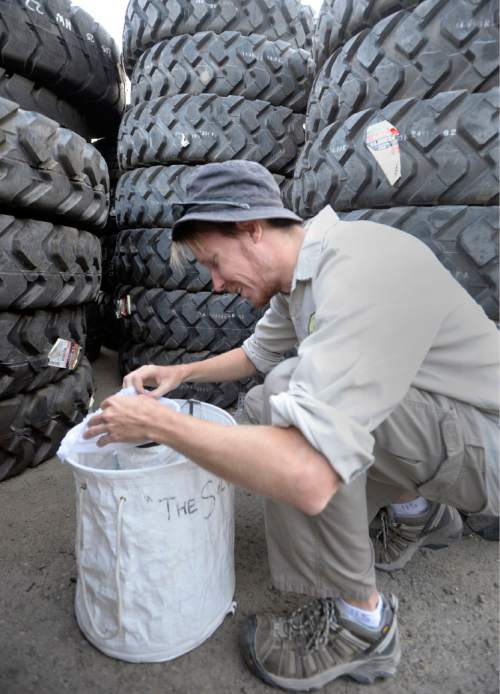This is an archived article that was published on sltrib.com in 2016, and information in the article may be outdated. It is provided only for personal research purposes and may not be reprinted.
About 30 mosquito traps are dispersed throughout the Salt Lake City area, luring native Utah mosquitoes so they can be tested for diseases.
But those traps don't work against the two mosquito species known to spread the Zika virus.
The city's Mosquito Abatement District couldn't afford to buy the appropriate traps, which cost about $300 each, so last year officials borrowed six from New Jersey, said Ary Faraji, the district's manager and entomologist.
That's nowhere near the 20 or more they need to effectively cover their jurisdiction, Faraji said.
"There's absolutely a chance we might be missing something because we have so few traps," he said.
The district did receive a budget increase of about $800,000, largely to deal with these invasive mosquito species. That uptick, however, will not take effect until 2017, Faraji said, so "this year, all of our efforts have been conducted using existing funding and sacrificing where and when we can for our surveillance efforts."
The two species known to spread Zika are considered container-inhabiting and are found in places such as auto-salvage yards and tire-recycling plants. They also feed during the day, unlike native mosquitoes.
Native, floodwater mosquito habitats "are very predictable, and we know where every one is in the jurisdiction," Faraji said. But invasive mosquitoes "thrive in small buckets, discarded cups, old tires — these containers are small and they're everywhere."
The two species have not been found in Utah recently, but have surfaced in Salt Lake County and St. George in previous years. Utah winters are harsh enough that the species were unable to establish, but officials say there is always a chance of migration from California and Arizona.
Faraji said district officials put traps out weekly and, so far, none of these species has turned up. The limited number of traps, however, means they can't put them everywhere they want.
It also means they have to rely on public assistance to help prevent and detect the spread of Zika in the area.
If members of the public observe striped mosquitoes feeding during the day, especially in shaded parts of residential backyards, Faraji said they should call their local abatement district. That way, he added, the infestation can be quashed before the mosquitoes are able to establish.
He added that these infestations often occur in neighborhoods.
Florida currently is dealing with such a situation. Mosquitoes are spreading Zika in a Miami neighborhood and pregnant women are being advised to stay away from that area, according to the Centers for Disease Control and Prevention.
Sexual activity can transmit the virus. If a woman is pregnant or trying to get pregnant, she should not have unprotected sex with a man who has been to an area where the virus is spreading. The virus can cause birth defects in children whose mothers were infected during pregnancy, according to the CDC.
Six individuals have reportedly contracted Zika from mosquitoes in Florida, and 1,955 travel-associated cases have been reported in the U.S. as of last week, the CDC states.
An unusual case of Zika recently cropped up in Utah that prompted the CDC to help state officials investigate.
An individual was diagnosed with the virus after caring for a now-deceased Salt Lake County man who was infected with Zika while traveling.
That man's caretaker was the eighth to be diagnosed with Zika in the state. The individual had not traveled to a Zika-infected area or had sexual contact with anyone who had gone to such an area or was infected. The person has since recovered.
The man he was caring for was elderly and had an underlying condition, but officials say the virus contributed to his death, which was the first confirmed Zika-related death in the continental U.S.
Cases of Zika are usually mild and rarely result in death. The most common symptoms of the virus are rash, joint pain, fever and red eyes. Most people who have Zika never exhibit symptoms, according to the CDC.
CDC officials left Utah a couple weeks ago and Tom Hudachko, state Department of Health spokesman, said the state hopes to issue a final report on the investigation findings in September.
Meanwhile, Faraji said he is "looking to purchase" five more traps for the mosquitoes transmitting Zika. He said he hopes New Jersey will allow them to "indefinitely borrow" the other six.
astuckey@sltrib.com Twitter @alexdstuckey


